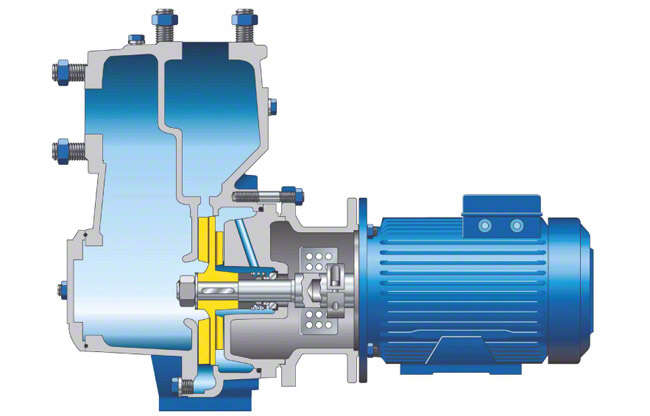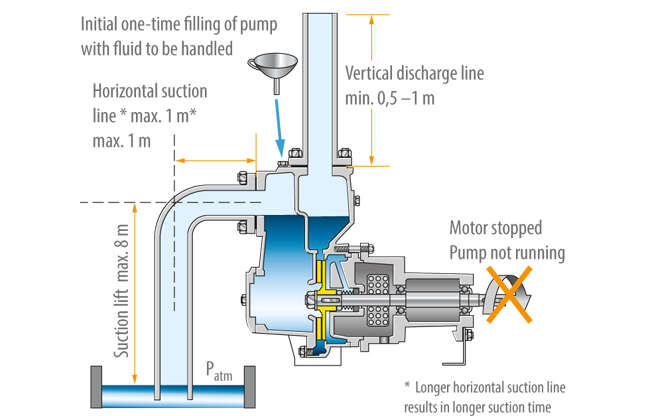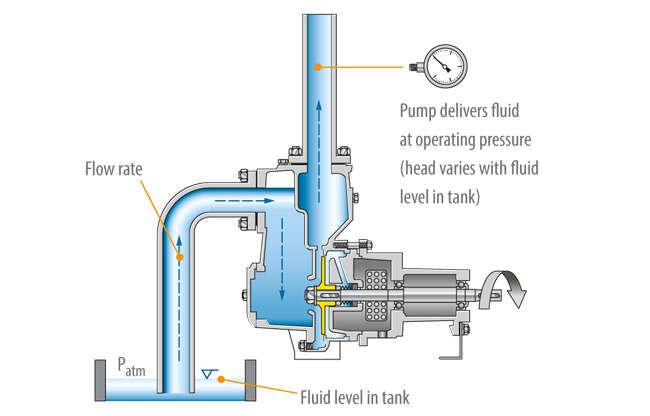Self-priming pump
In normal conditions, common centrifugal pumps are unable to evacuate the air from an inlet line leading to a fluid level whose geodetic altitude is below that of the pump. Self-priming pumps have to be capable of evacuating air (see Venting) from the pump suction line without any external auxiliary devices.
Centrifugal pumps with an internal suction stage such as water jet pumps or side channel pumps are also classified as self-priming pumps.
Centrifugal pumps which are not designed with an internal or external self-priming stage can only start to pump the fluid after the pump has initially been primed with the fluid. In addition, a suction-side swing check valve or a vent valve must be fitted to prevent any siphon action and ensure that the fluid remains in the casing when the pump has been stopped. In self-priming centrifugal pumps with a separation chamber the fluid pumped and the entrained air bubbles are pumped into the separation chamber by the impeller action. See Fig. 1 Self-priming pump

Fig. 1 Self-priming pump: Self-priming pump with separation chamber (without self-priming stage)
The air escapes through the pump discharge nozzle whilst the fluid drops back down and is once more entrained by the impeller. The suction line is thus continuously evacuated. The design required for such a self-priming feature has an adverse effect on pump efficiency. Also, the dimensions of the separating chamber are relatively large. For these reasons this solution is only adopted for small pumps, e.g. garden pumps. More frequently used types of self-priming pumps are side channel and water ring pumps. Another type of self-priming pump is a centrifugal pump with two casing chambers and an open impeller. This design is not only used for its self-priming capabilities but also for its degassing effects when pumping twophase mixtures (air/gas and liquid) for a short time in process engineering or when handling polluted fluids, for example when draining water from construction pits. See Fig. 2 Self-priming pump

Fig. 2 Self-priming pump: Close-coupled centrifugal pump with two casing chambers
This pump type operates without a foot valve and without an evacuation device on the suction side. The pump has to be primed with the fluid to be handled prior to commissioning. See Fig. 3 Self-priming pump

Fig. 3 Self-priming pump: Centrifugal pump with two casing chambers prior to commissioning
Two-phase mixture is pumped until the suction line has been evacuated and the fluid level has been pushed into the front suction intake chamber or atmospheric pressure. During normal pumping operation this pump works like an ordinary centrifugal pump. See Figs. 4, 5 Self-priming pump

Fig. 4 Self-priming pump: Centrifugal pump with two casing chambers: suction process

Fig. 5 Self-priming pump: Centrifugal pump with two casing chambers: pumping duty
